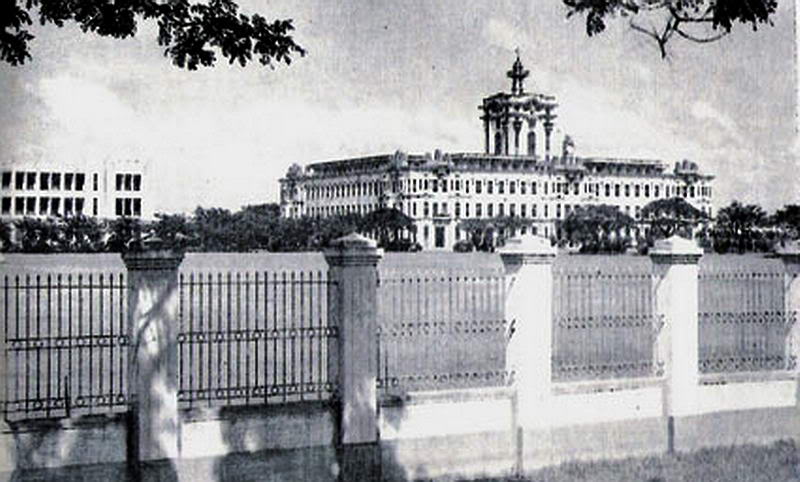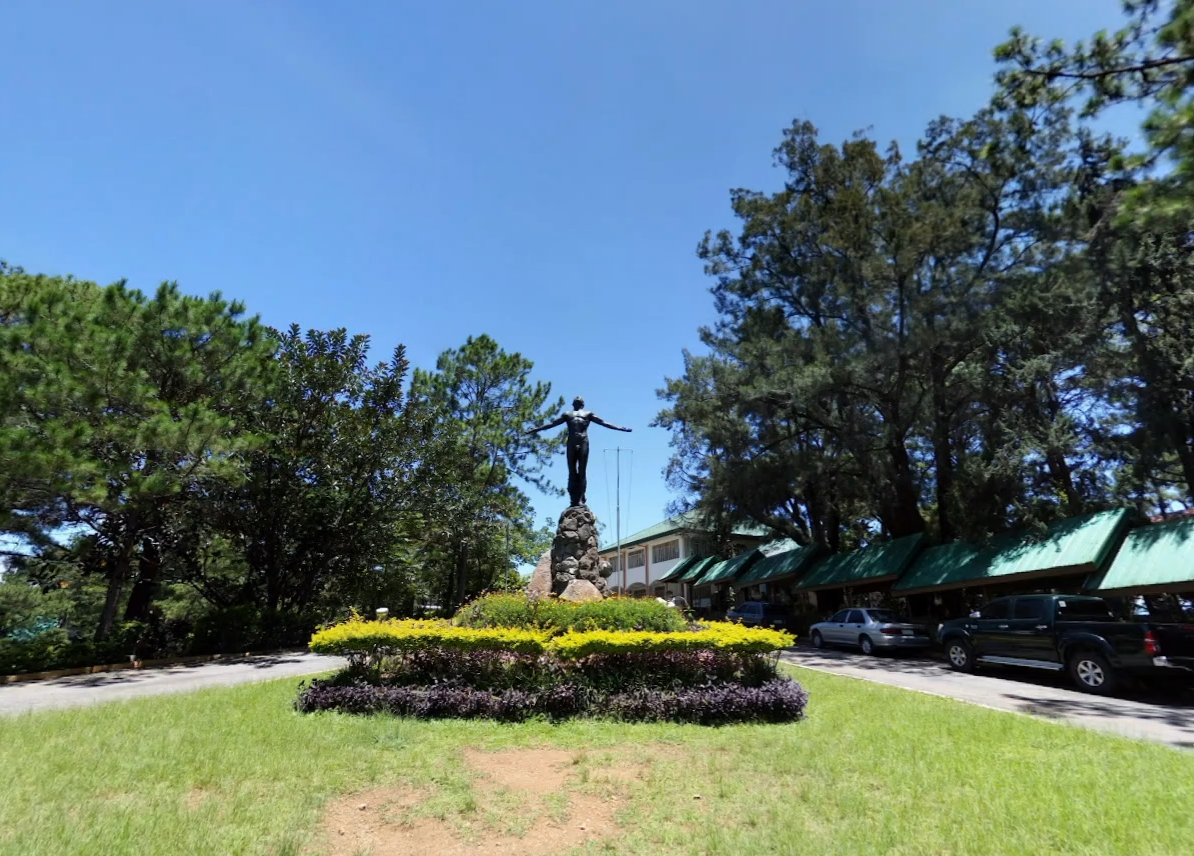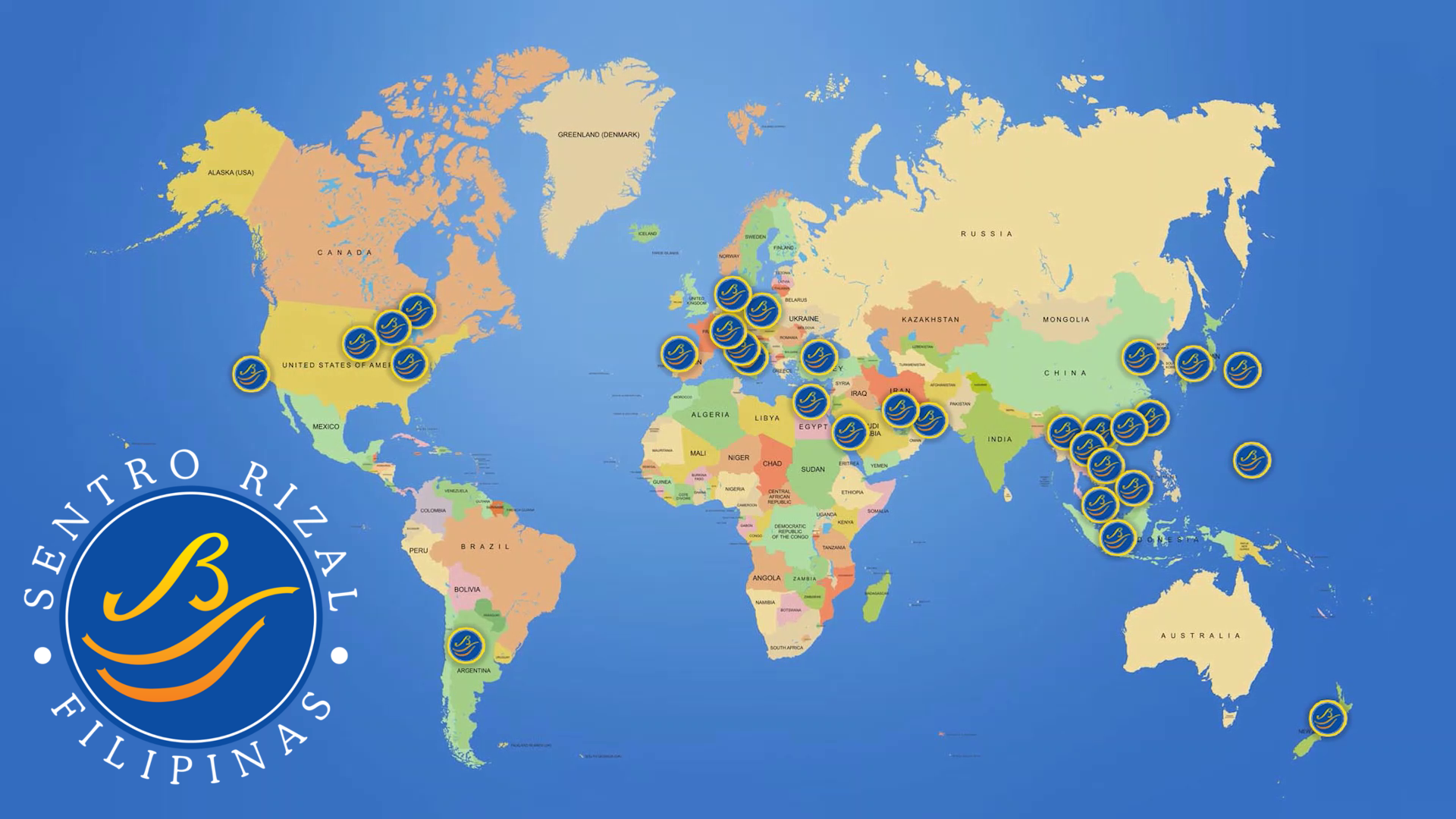|
Filipinos In Oman
Filipinos in Oman are either migrants or descendants of the Philippines living in Oman. As of 2011, there are between 40,000 and 46,000 of these Filipinos in Oman. A large destination for Overseas Filipino workers (OFWs), Oman was the only Middle Eastern nation included on the Philippine Overseas Employment Administration's list of nations safe for OFWs. The country still holds the title up to this day. Economy and employment Oman is the tenth largest destination for Filipino domestic workers hired or rehired from 2006–2011, but Filipinos are also employed in the health care industry as physicians and nurses, or as sales associates and cosmetologists. Oman is a source of remittances sent back to the Philippines, with roughly $66.5 million USD sent back in 2011 and $55.8 million USD officially sent back in 2010. Five Filipino banks have correspondent accounts with banks in Oman to allow for remittance transfers. There is also a Filipino Workers Resource Center (FWRC) in Oman th ... [...More Info...] [...Related Items...] OR: [Wikipedia] [Google] [Baidu] |
Tagalog Language
Tagalog (, ; ; '' Baybayin'': ) is an Austronesian language spoken as a first language by the ethnic Tagalog people, who make up a quarter of the population of the Philippines, and as a second language by the majority. Its standardized form, officially named ''Filipino'', is the national language of the Philippines, and is one of two official languages, alongside English. Tagalog is closely related to other Philippine languages, such as the Bikol languages, Ilocano, the Bisayan languages, Kapampangan, and Pangasinan, and more distantly to other Austronesian languages, such as the Formosan languages of Taiwan, Indonesian, Malay, Hawaiian, Māori, and Malagasy. Classification Tagalog is a Central Philippine language within the Austronesian language family. Being Malayo-Polynesian, it is related to other Austronesian languages, such as Malagasy, Javanese, Indonesian, Malay, Tetum (of Timor), and Yami (of Taiwan). It is closely related to the languages spoken in the Bi ... [...More Info...] [...Related Items...] OR: [Wikipedia] [Google] [Baidu] |
Bangko Sentral Ng Pilipinas
The Bangko Sentral ng Pilipinas (; commonly abbreviated as BSP in both Filipino and English) is the central bank of the Philippines. It was established on July 3, 1993, pursuant to the provision of Republic Act 7653 or the New Central Bank Act of 1993 as amended by Republic Act 11211 or the New Central Bank Act of 2019. History American era and World War II In 1900, the First Philippine Commission passed Act No. 52, which placed all banks under the Bureau of the Treasury and authorizing the Insular Treasurer to supervise and examine banks and all banking activity. In 1929, the Department of Finance, through the Bureau of Banking, took over bank supervision. By 1933, a group of Filipinos had conceptualized a central bank for the Philippine Islands. It came up with the rudiments of a bill for the establishment of a central bank after a careful study of the economic provisions of the Hare–Hawes–Cutting Act, which would grant Philippine independence after 12 years, bu ... [...More Info...] [...Related Items...] OR: [Wikipedia] [Google] [Baidu] |
Andrés Bonifacio
Andrés Bonifacio y de Castro (, ; November 30, 1863May 10, 1897) was a Filipino Freemason and revolutionary leader. He is often called "The Father of the Philippine Revolution", and considered one of the national heroes of the Philippines.. He was one of the founders and later the ''Kataastaasang Pangulo'' (Supreme President, ''Presidente Supremo'' in Spanish, often shortened by contemporaries and historians to just ''Supremo'') of the '' Kataastaasan, Kagalanggalangang Katipunan ng mga Anak ng Bayan'' or more commonly known as the "Katipunan", a movement which sought the independence of the Philippines from Spanish colonial rule and started the Tagalog Revolution. With the onset of the Revolution, Bonifacio reorganized the ''Katipunan'' into a revolutionary government, with himself as President (''Pangulo'') of a nation-state called "Haring Bayang Katagalugan" ("Sovereign Nation of the Tagalog People" or "Sovereign Tagalog Nation"), also "Republika ng Katagaluguan" ("Tag ... [...More Info...] [...Related Items...] OR: [Wikipedia] [Google] [Baidu] |
Philippine Declaration Of Independence
The Philippine Declaration of Independence ( fil, Pagpapahayag ng Kasarinlan ng Pilipinas; es, Declaración de Independencia de Filipinas); es, Acta de la proclamación de independencia del pueblo Filipino, link=no) was proclaimed by Filipino revolutionary forces general Emilio Aguinaldo on June 12, 1898, in Cavite el Viejo (present-day Kawit, Cavite), Philippines. It asserted the sovereignty and independence of the Philippine Islands from the colonial rule of Spain. History In 1896, the Philippine Revolution began. In December 1897, the Spanish government and the revolutionaries signed a truce, the Pact of Biak-na-Bato, requiring that the Spanish pay the revolutionaries $ MXN800,000 and that Aguinaldo and other leaders go into exile in Hong Kong. In April 1898, at the outbreak of the Spanish–American War, Commodore George Dewey aboard the U.S.S. ''Olympia'' sailed into Manila Bay leading the Asiatic Squadron of the U.S. Navy. On May 1, 1898, the United States defe ... [...More Info...] [...Related Items...] OR: [Wikipedia] [Google] [Baidu] |
Independence Day (Philippines)
Independence Day ( fil, Araw ng Kasarinlán; also known as ''Araw ng Kalayaan'', "Day of Freedom") is an annual national holiday in the Philippines observed on June 12, commemorating the declaration of Philippine independence from Spain in 1898. History The earliest recorded event related to the holiday was when Andres Bonifacio, along with Emilio Jacinto, Restituto Javier, Guillermo Masangkay, Aurelio Tolentino, Faustino Manalak, Pedro Zabala and few other Katipuneros went to Pamitinan Cave in Montalban, Rizal to initiate new members of the Katipunan. Bonifacio wrote ''Viva la independencia Filipina!'' or ''Long Live Philippine independence'' on walls of the cave to express the goal of their secret society. Bonifacio also led the Cry of Pugad Lawin, which signals the beginning of the Philippine Revolution. Members of the Katipunan, led by Bonifacio, tore their community tax certificates (''cedulas personales'') in protest of Spanish conquest. The Philippine Revolutio ... [...More Info...] [...Related Items...] OR: [Wikipedia] [Google] [Baidu] |
University Of Santo Tomas
The University of Santo Tomas (also known as UST and officially as the Pontifical and Royal University of Santo Tomas, Manila) is a private, Catholic research university in Manila, Philippines. Founded on April 28, 1611, by Spanish friar Miguel de Benavides, third Archbishop of Manila, it has the oldest extant university charter in the Philippines and in Asia, and is one of the world's largest Catholic universities in terms of enrollment found on one campus. It is the main campus of the University of Santo Tomas System that is run by the Order of Preachers. UST was granted the title “Royal” by King Charles III of Spain in 1785. Pope Leo XIII made UST a "Pontifical" university in 1902. Pope Pius XII bestowed upon UST the title of “The Catholic University of the Philippines” in 1947. UST houses the first and oldest engineering, law, medical, and pharmacy schools in the country. The main campus is the largest university in the city of Manila and is home to 22 degree-gran ... [...More Info...] [...Related Items...] OR: [Wikipedia] [Google] [Baidu] |
University Of The Philippines
The University of the Philippines (UP; fil, Pamantasan ng Pilipinas Unibersidad ng Pilipinas) is a state university system in the Philippines. It is the country's national university, as mandated by Republic Act No. 9500 (UP Charter of 2008), giving it institutional autonomy. Originally founded by the American colonial government on June 18, 1908, it was established through the ratification of Act No. 1870 of the 1st Philippine Legislature to serve as an "advanced instruction in literature, philosophy, the sciences and arts, and to give professional and technical training" to eligible students regardless of "age, sex, nationality, religious belief and political affiliation." The University of the Philippines system has 8 constituent universities (CUs): UP Diliman, which serves as the system's flagship university, UP Los Baños, UP Manila, UP Visayas, UP Open University, UP Mindanao, UP Baguio, and UP Cebu which are scattered across 17 campuses. Widely regarded and ... [...More Info...] [...Related Items...] OR: [Wikipedia] [Google] [Baidu] |
Department Of Education (Philippines)
The Department of Education (abbreviated as DepEd; fil, Kagawaran ng Edukasyon) is the executive department of the Philippine government responsible for ensuring access to, promoting equity in, and improving the quality of basic education. It is the main agency tasked to manage and govern the Philippine system of basic education. It is the chief formulator of Philippine education policy and responsible for the Philippine primary and secondary school systems. It has its headquarters at the DepEd Complex in Meralco Avenue, Pasig. The department is currently led by the secretary of education, nominated by the president of the Philippines and confirmed by the Commission on Appointments. The secretary is a member of the Cabinet. The current secretary of education is Sara Duterte. Presently, its mission is to provide quality basic education that is equitably accessible to all and lay the foundation for lifelong learning and service for the common good. It has changed its vision state ... [...More Info...] [...Related Items...] OR: [Wikipedia] [Google] [Baidu] |
K-12 (education)
K-1 is a professional kickboxing promotion established in 1993, well known worldwide mainly for its heavyweight division fights and Grand Prix tournaments. In January 2012, K-1 Global Holdings Limited, a company registered in Hong Kong, acquired the rights to K-1, and is the current organizer of K-1 events worldwide. Founded in 1993 by karateka Kazuyoshi Ishii, at its height in the late 90s and the 2000s under the ownership of the Fighting and Entertainment Group (FEG), K-1 was the largest and most prestigious " Kickboxing" organization in the world. With thousands of fighters and watched by millions of fans around the world. K-1 also promoted mixed martial arts events, with some events having both kickboxing and MMA matches on their cards (such as their Dynamite!! series). However, since 2010 K-1 started to lose its status of top organization, as FEG started to have financial issues, not being able to organize big events or pay huge prize money, eventually going bankrupt, an ... [...More Info...] [...Related Items...] OR: [Wikipedia] [Google] [Baidu] |
Philippine School Sultanate Of Oman
The Philippine School Sultanate of Oman (also known as Philippine School Muscat), established in 1989, is a private school in the Persian Gulf region. Located in the city of Muscat, Oman, the school caters to the Filipino community as well as foreigners. History Foundation and opening The institution was founded in 1989 as the Philippine Community School by Filipino Overseas Workers in Oman, in cooperation with the Philippine government agencies Overseas Workers Welfare Administration (OWWA) and the Department of Labor and Employment (DOLE), with support of the Philippine Honorary Consul General his Excellency Essa bin Mohammed Al Zedjali. It opened in 1990 at the Al Wattayah district with 38 students handled by volunteer teachers, before the arrival of hired principal, Elenita Fernandez, in June of that year. With the arrival of the first three elementary teachers before the end of 1990, the school began offering a separate preschool and elementary level. After producing ... [...More Info...] [...Related Items...] OR: [Wikipedia] [Google] [Baidu] |
Muscat, Oman
Muscat ( ar, مَسْقَط, ) is the Capital (political), capital and most populated city in Oman. It is the seat of the Muscat (governorate), Governorate of Muscat. According to the National Centre for Statistics and Information (NCSI), the total population of Muscat Governorate was 1.4 million as of September 2018. The metropolitan area spans approximately and includes six Provinces of Oman, provinces called . Known since the early 1st century Anno Domini, AD as an important trading port between the Western world, west and the Eastern world, east, Muscat was ruled by various indigenous tribes as well as foreign powers such as the Sassanid Empire, Persians, the Portuguese Empire and the Ottoman Empire at various points in its history. A regional military power in the 18th century, Muscat's influence extended as far as East Africa and Zanzibar. As an important port-town in the Gulf of Oman, Muscat attracted foreign tradesmen and settlers such as the Persians, Baloch people, Bal ... [...More Info...] [...Related Items...] OR: [Wikipedia] [Google] [Baidu] |
Sentro Rizal
The Sentro Rizal is a Philippine government-sponsored organization whose main objective is the global promotion of Filipino art, culture, and language. Established by virtue of the National Cultural Heritage Act of 2009, its headquarters is located at the National Commission for Culture and the Arts (NCCA) office in Intramuros, Manila Manila ( , ; fil, Maynila, ), officially the City of Manila ( fil, Lungsod ng Maynila, ), is the capital of the Philippines, and its second-most populous city. It is highly urbanized and, as of 2019, was the world's most densely populate .... Sentro Rizal aims to promote Philippine arts, culture, and language throughout the world through the establishment of Philippine centers in various countries which initiate and organize cultural training programs and activities for overseas Filipinos. Sentro Rizal is named after José Rizal, the Philippines' acclaimed national hero, writer, and polymath. His works Noli Me Tángere (novel), Noli Me Tá ... [...More Info...] [...Related Items...] OR: [Wikipedia] [Google] [Baidu] |






